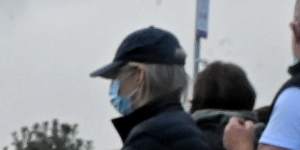Sulphur-crested cockatoos were first observed flipping open bin lids to raid the juicy spoils inside about 10 years ago,but the behaviour was limited to three suburbs around Stanwell Park. Barely two years later,flocks had picked up the trend across 44 suburbs.

“It’s been spreading to the Sutherland area,out to Campbelltown,and we get the occasional report from other parts of Sydney and down in the Illawarra,” said Dr John Martin,a senior ecologist at Ecosure Environmental Consultancy.
Now,the parrot piracy has hit the northern beaches.
“Clever cockies around Newport and Avalon shops have worked out how to open the waste bins to access the food scraps within,” the council warned on Thursday.
“Shop owners have had enough,using weights to stop the crafty birds raiding their rubbish and creating mess.”

A cockatoo in Avalon,a suburb where examples of bin-raiding birds can be seen.Nick Moir
Martin said if the behaviour had indeed spread along the golden shores north of the city,that would represent a new raiding ground for the sulphur-crested crooks.
He’s part of a group tracking the spread of the bin-flipping fad,which has become a world-renowned example of animals teaching each other new tricks.
“It’s one of the few examples of birds demonstrating social learning. Wind back the clock only 70 years ago and it was assumed only humans were capable of that,” Martin said.
Martin and his colleagues have also reported evidence of distinct bin-foraging “”.
Cockatoos within one flock learn from each other and use the same method to flip open bins. A flock the suburb over might observe and adopt the practice but put their own spin on the technique – for example,prising a lid open with a foot rather than their beak.

“We see cultural differences between flocks,in addition to the social learning,” Martin said. It’s “exceptionally rare” to come across such a clear-cut and unique example of social learning and cultural transmission,which has also been observed in killer whales and chimpanzees.
The has asked people to report whether cockatoos have targeted their bins (or not) as scientists map the extent and spread of the fascinating behaviour.
Techniques to deter the cockatoos include weighing down the bin lids with bricks (easily dispatched),spooking the birds with plastic snakes (the fear factor doesn’t last),wedging sneakers or metal springs into the bin’s hinge (limited success),and locks that block cockatoos but allow the bin to open when tipped by a garbage truck (seems to work,but it’ll cost you).
There’s a reason scientists have called it “”.
And ecologists are studying humans as much as the birds. They’ve found people enlisted in the cockatoo bin war are more likely to adopt the methods their neighbours use to keep their bins safe – another example of social learning.
“‘Monkey see,monkey do’ of course applies to us,as well,” Martin said. “When it boils down to it,we are animals.”
The Examine newsletter explains and analyses science with a rigorous focus on the evidence..